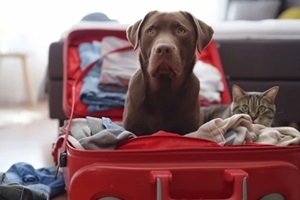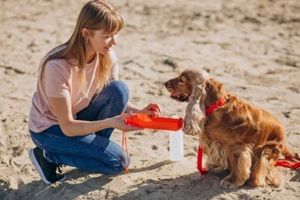 Leaving a pet while traveling for work or leisure can be stressful. How can anyone care for your beloved furry friend as well as you? For most people, the main source of stress comes from wondering what will happen if something goes wrong.
Leaving a pet while traveling for work or leisure can be stressful. How can anyone care for your beloved furry friend as well as you? For most people, the main source of stress comes from wondering what will happen if something goes wrong.
To achieve the best outcomes with your pet sitting service, creating a pet emergency plan for your sitter before you go is important.
Here is a step-by-step guide on what should be included in this plan and how to get started so that you can rest assured your companion is in good hands, even if things go wrong.
Determine What Constitutes an Emergency
When creating a pet emergency plan determine what qualifies as an emergency. For healthy pets with no history of illness, this is fairly straightforward — a pet that is bleeding, struggling to breathe, or experiencing other symptoms should be treated as an emergency, and reliable sitters will understand this.
However, if you have a pet with special medical concerns or medication needs, you may need to add these things to your list of what constitutes an emergency. For instance, if your pet takes insulin shots, your sitter should look out for excessive thirst or accidents in the house.
This could mean that something is not working with their shots. Similarly, if you own a pet with bronchitis, it may not be worrisome that they appear lethargic and unwilling to play; make note that this is normal and gives no cause for alarm for your particular animal.
Plan at Least One Meet-and-Greet
It is useful for your sitter to meet your pet at least once before you leave. This allows them to get a glimpse into your animal’s personality so they can identify abnormal behavior, which may indicate something is wrong.
It also allows you to guide them around the home and show them your pet’s favorite hangouts and behaviors. If your animal begins to act strangely while you’re gone, your sitter can compare their activity to what they experienced during their visit.
Create a Resource List
Your pet emergency plan should include a detailed (but easy to read) resource list that includes, at minimum:
 Your preferred veterinary clinic
Your preferred veterinary clinic- The clinic address
- The clinic phone number
- Your pet insurance policy information, if applicable
- Medication dosages and names, if applicable
- Your emergency contact information
If you would like to leave further information, such as a description of your pet’s behaviors and preferences, be sure to print this on a separate page and leave the emergency information on top.
This way, the sitter can quickly access the information without needing to skim through other material first.
Discuss Responsibilities
The next part of a pet emergency plan should indicate what role the sitter has in your pet’s emergency care. Who is responsible for paying and when? Can the sitter make medical decisions on your behalf if you cannot be reached?
How long should they try to reach you before making such decisions? Thoroughly discussing these responsibilities before the owner leaves allows the sitter and the owner to proceed with clarity and confidence.
Failure to communicate these responsibilities proactively could delay important medical care while you and the sitter try to navigate these issues.
Map Out Your Routines
Be sure to leave your pet sitter with a description of your normal routines with your pet. When do they eat, play, go potty, or do other routine activities? Where does your pet like to hide?
These can all be essential pieces of information that help your sitter determine if your pet is acting normally or if they may be hurt or sick.
If your dog regularly hides in the closet, this is no cause for concern; however, if your normally playful and friendly pet suddenly curls up in the closet while you are away, your sitter can review your daily description to understand that this isn’t normal and that they should investigate the situation.
Work with a Northern Virginia Pet Sitters You Can Trust
 Taking care of pets requires a thoughtful approach that takes the time to learn each animal’s unique attitudes and preferences.
Taking care of pets requires a thoughtful approach that takes the time to learn each animal’s unique attitudes and preferences.
The best pet sitters will have training on what to do in case of an emergency so that you can confidently leave your pet in good hands.
The professionals at Paw Pals are all certified in CPR and first aid specifically for pets, and everyone must undergo recertification every other year to stay on top of new and developing changes in handling emergencies.
Contact Paw Pals to schedule a meet and greet with a sitter and develop a pet emergency plan before you go so your furry friend will be safe until you return.


